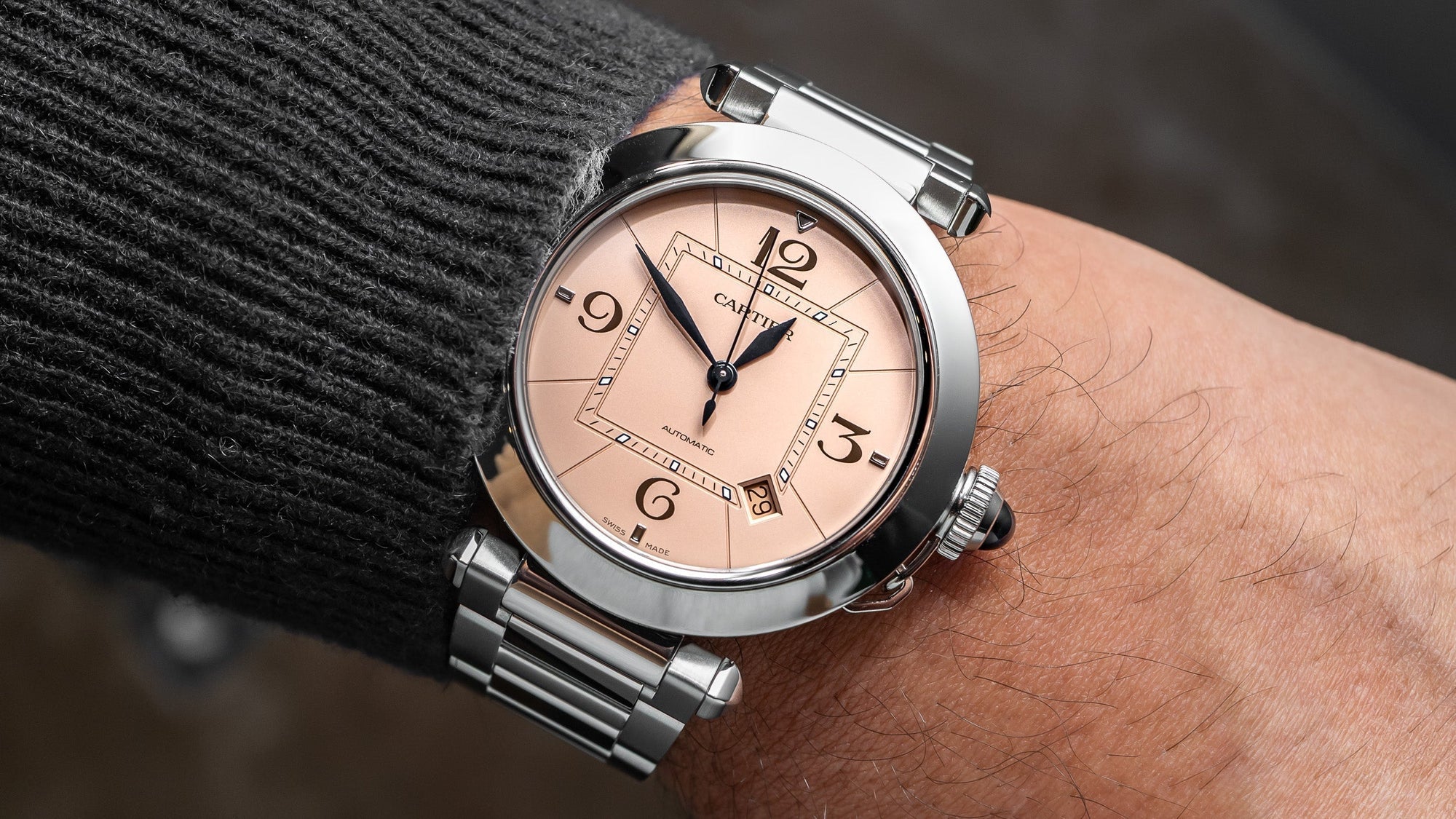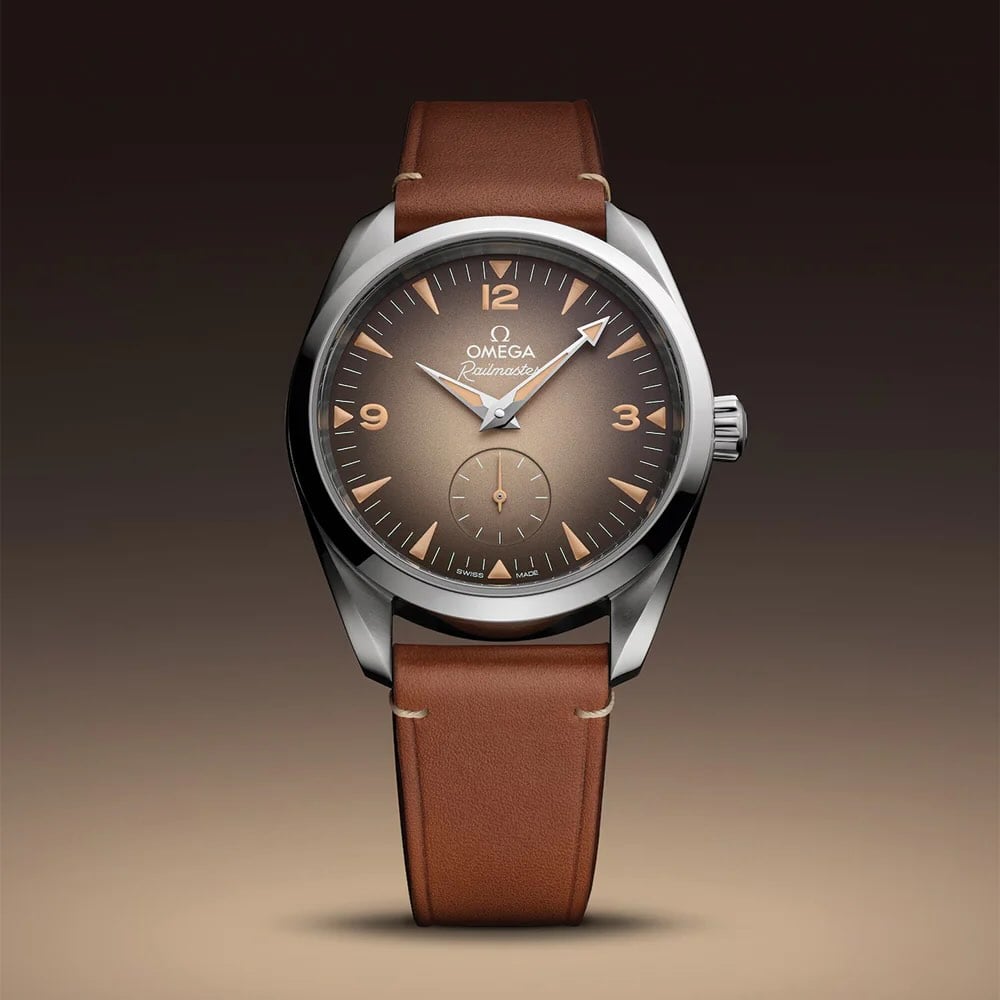In the world of watches, as with pretty much every niche of consumer goods, brands begin to become associated with the things that receive the most praise and attention. While the hyped watches in question undoubtedly earn the adoration of the masses for many reasons, whether it be their unique historical context, utility, or just plain and simple great looks, there are many other watches that get relegated to the sidelines that deserve another look. Since I personally love to root for an underdog, I wanted to take some time to shine a spotlight on some watches from the big popular watch brands that we know and love that often get lost in the shadows cast by the more popular catalog compatriots. From Rolex and Omega to Tudor and beyond, below you’ll find watches that deserve a little more love than they typically get.
Rolex 1908

I’m beginning with the watch that has quite literally been relegated to the bottom of Rolex’s own website with the Rolex 1908. Given that this is the most dressy model within The Crown’s contemporary collection, I would argue that it's also the watch that flies under the radar the most. The 1908 isn’t something that you spot across the room at a crowded restaurant or at a bar and immediately clock as a Rolex watch, which is ultimately why I find it endearing. It’s something that needs to be appreciated up close and personal.

The world's most popular watch brand has made recent attempts to breathe some new life into the Rolex 1908 with guilloché dials, and, very recently, at Watches And Wonders with the introduction of the new Settimo bracelet (which we reviewed here) in yellow gold, but still, it was overshadowed by the brand new Land-Dweller that crashed the scene. The design ethos of the 1908 is overtly traditional, and given that it's typically only made in precious metals, I think this does make it come off as somewhat stuffy compared to its sportier contemporaries. In all honesty, the 1908 didn’t occupy much of my imagination until I saw it in person this year in Geneva, and was granted permission to give it a spin on my wrist, Settimo bracelet and all. I left with a newfound appreciation for its subtlety, its staunchly classical style. The 1908 also delivers in the movement department with the Superlative Chronometer 7140 automatic caliber, which features that silicon Syloxi hairspring that people went wild for with the release of the Land-Dweller, as well as the Chronergy escapment and Paraflex shock absorbers. It’s also a great move that this line features a sapphire crystal exhibition caseback, so you can see all that mechanical ingenuity in action. A lot in my life would have to change for me to even remotely consider nabbing the 1908 for myself, but as with all of the lovely watches out of my budget, looking at them through the lens of horological art helps.
Rolex Explorer II

Though I could have gone with the other Rolex watch relegated to the bottom of the Crown’s digital catalog, I think the Explorer II offers a much more classic Rolex style while still remaining outside of the boundaries of typical Rolex hype. It’s also a bit more versatile in its aesthetic and functionality, considering the 24-hour bezel and that quintessential poppy and bright GMT hand.

Maybe it boils down to the 42mm diameter on the current Explorer II that has led to its lack of popularity compared with the more versatile-sized 40mm GMT Master II. The Explorer II even gets overlooked compared to the typical Explorer. Despite this, the Explorer II has a certain unique charm of its own, with my preference being the white “polar” dial options over the black dial models, specifically the 16750 seen above and reviewed here. The utility behind its design only gives more of a welcome quirk to its lore, with its origin story being that it was largely intended for the use of cave and polar explorers with limited light available on excursions, hence the ultra-legible dial layout. The reference 226570 is the most current version of the Explorer II, and has a lug-to-lug of 50mm with a thickness of 12.5mm for its Oyster case with Monobloc construction at the middle case, as well as a screw-down crown and caseback, which helps achieve a water resistance of 100 meters. Additionally, the Rolex Manufacture 3285 caliber with GMT functionality (Superlative Chronometer Certified, of course) powers this generation of the Explorer II, which has a 70-hour power reserve.
Omega Constellation

Initially, I thought about throwing the De Ville in this roundup, given that it remains the entry point in terms of price into the Omega universe, but I’d rather focus my energy totally on the Constellation as a collection. Chronometry history is a big deal in the world of Swiss watchmaking at large, but the Constellation collection is Omega’s ultimate tribute to the timekeeping trials that have spurred the dedication to accuracy for the last century.
The Omega Constellation Globemaster is one that for whatever reason has just become lost in the sauce of the brand’s catalog – but the mystique of the Speedmaster is a lot of competition to face in the world of watches after all. The Constellation Globemaster has a diameter of 39mm, a 12.6mm case thickness, and a 46.7mm lug-to-lug, and has a number of different dial and material construction options to choose from. Aside from its Master Chronometer caliber 8900 movement, what I think is the real charm of this watch is its funky “pie tin” shaped dial, which is a direct callback to the Constellation of 1952, and really works in beautiful concert with the fluted bezel, which also looks very pie-crust-like to me. Delicious. The caseback is also adorned with the medallion of the Central Observatory to further tie into the history of chronometer certification. For all its technical prowess, it is a relatively simple and streamlined watch with a versatile yet sporty look, but there’s enough mid-century design flair there to keep things interesting.

What’s interesting to me about the larger constellation family is that it seems that Omega has chosen it as its primary vehicle of expression for women’s watches. The size range dips all the way into teeny tiny 25mm territory, but to my chagrin, those scrumptiously pint-sized options are only available in quartz. Though slightly larger, the 29mm take on the Constellation is where the line really impresses me, given that this is powered by the METAS-Certified Co-Axial Master Chronometer 8700 caliber. The brand really has gone a bit wild on the number of options for this subset of the line, but the two-toned iterations in steel and yellow gold are the ones I am most drawn to. And if you're really into it, you can read the full history of the Constellation here.
Grand Seiko SBGE257

In its totality, I would say the Sport Collection (more on that here) is the most slept-on collection within the contemporary world of Grand Seiko. This does make logical sense, given that one of the major draws of Grand Seiko is its insanely crafted dials, and many of the brand's sports options are quite large, and not necessarily offered at the most competitive price point, given the sheer amount of sports watches out there. But coming in with a reasonable diameter measurement for a change at 40.5mm, the SBGE257 (with honorable mentions to the SBGE252 and SBGE255) packs in 200 meters of water resistance and a GMT Spring Drive movement with the 9R66 caliber despite being much smaller and more wearable than its other Sports Collection family members.
Grand Seiko STGK009

As an appreciator of small watches, I have hardly heard or peep, or mention of Grand Seiko’s pint-size automatic watches, which is something of a shame. I think the whole STGK sub-group has been not only overlooked by fellow small watch enthusiasts but also by Grand Seiko itself, as there are only a few options available for its tiny 27.8mm watches that utilize the 9S27 automatic movement, and most of them are a little blinged out for my taste. I’ve gone with this sans-diamond model, which is more pleasantly sporty to me, though I do have a gripe with the dial. Why not give the people some options available at this size with a dial that’s as meticulously finished as the snowflake or Shunbun? There is a small option with a snowflake dial in existence (the STGF359), but of course, it's quartz, and there are also the STGK033 and STGK031 models, but I think we could go smaller here. Sigh.
Cartier Pasha

I will die on the hill that the Cartier Pasha is a criminally underrated offering from one of the world's most popular watch brands. When I was first diving into the wild world of watches, I felt an immediate kinship with the Pasha given its strange history, and that it stands out boldly against the square and rectangular watches that the brand has become most synonymous with (hello, Santos and Tank).
The origin story of the Cartier Pasha was that it can be traced back to a watch made in the early 1930s for the Pasha of Marrakesh, who put Cartier to the test of making a gold watch that could weather the Pasha’s surprisingly athletic lifestyle. It seems that the Pasha (Thami El Glauoi) was quite fond of swimming. That’s the lore aspect of the Pasha, but this imaginative legacy would be brought to life by none other than Gerald Genta himself, who ushered in the Pasha as we know it in 1985.
The Cartier Pasha is immediately distinct with its circular frame, as well as its unique screw-down cap and cabochons. The Pasha has taken on many sizes throughout the years, though being a bit on the larger side has been a part of the line’s DNA since the 38mm of the mid-80s. Forgive me for being an alarmist, but I do have suspicions that Cartier might be quietly phasing out the Pasha from its catalog. As of today, many of the typical steel and white dials have mysteriously vanished from the brand’s own website. I really hope for personal reasons, my hunch is untrue.
Tissot Heritage 1938

In all honesty, I don’t think this pick probably comes as a real surprise. The PRX is the superstar of Tissot’s repertoire, and pretty much the affordable darling of the integrated bracelet world, but the Heritage 1938 captures the spirit of the golden years of watchmaking in a way that is refreshingly atypical for the Tissot of today. The salmon dial iteration is my personal favorite, and I love the vintage-inspired charm of the railroad minutes track and the overall typography used. Another big plus of this one, in addition to its versatile 39mm diameter, is that it's got a COSC-Certified movement, and it's under $1,000! Woohoo!
Tissot Le Locle Automatic Small Lady

While the pick above was definitely expected, there’s no way that this one isn’t, because until doing my digging around in the Tissot catalog, I didn’t even know this one existed. I will say the moniker “Small Lady” doesn’t exactly strike my fancy, what does about this watch is that it's tiny (a mere 25.3mm in diameter!) and powered by an automatic movement. Though I’m a bit on the fence about what looks to be a continentless depiction of a globe at the dial’s center, I do like the slim, mesh-like bracelet that this watch is paired with, as well as its clean and classic looks. Oh, and it's also under $700, which is a huge win in this watch’s favor.
Tudor 1926

Forgive me for playing the hits here, but I would venture to guess that from the title of this article, you likely saw Tudor’s dressy 1926 coming your way. Again, what’s charming about this watch is its departure from the brand’s typical sporty, tool-oriented identity with its more traditional dial layout, mixing Arabic numerals with an Art Deco flair with triangular applied indices. In the Tudor catalog, potential for the 1926 abounds for a cute his-and-hers moment, given that it's available in 28mm, 36mm, 39mm, and 41mm size options. The 41mm version seen here is powered by the automatic Calibre T601, while my personal favorite size, the 28mm, also has an automatic mechanical movement with the Calibre T201. Oh, and all of the sizes are water resistant to 100 meters, which adds a touch of ruggedness that’s somewhat unexpected given the formal looks of the Tudor 1926.
Longines Master Collection Chrono Moonphase

Given that this watch manages to pack in chronograph, moonphase, and date functionality into a 40mm diameter all for under $4,000, it’s a mystery that I don’t see many enthusiasts out there singing the Master Collection Chrono Moonphases' praises loudly and proudly more often. Further, I would say that the entire Master Collection is somewhat of a sleeper hit within the Longines catalog, most particularly in the case of its other various pieces with a moonphase complication. Maybe I’m biased, as I find a moonphase complication in general to be quite charming. This watch achieves that extensive suite of functionality with the help of its L687 caliber, which has a power reserve of 66 hours.
Longines DolceVita

When I see the opportunity to sneak in one of my favorite Longines into an article, I do feel obligated to take it. I mean, the DolceVita isn’t even in the collection menu on the brand’s homepage for crying out loud! Longines tribute to its own Art Deco era, I love that the DolceVita is somewhat of an oddball within the brand’s repertoire with its rectangular case shape. Though my favorite, the DolceVita Mini, is quartz powered, the larger 27.7mm and 28mm models are, in fact, powered by the automatic L592 caliber, and are priced under $2,000, which is a much more affordable price point than a certain other well-known rectangular watch.
Seiko Astron SSH107 GPS Solar

Seiko’s 1969 Astron is the watch responsible for kicking off the quartz crisis, but the Astron GPS Solar has yet to incite a Solar Quartz crisis, at least as far as I’m aware. Likely, the source of this watch’s latent popularity is its price tag of $2,500, which is obviously much higher than you’d typically expect from Seiko. Still, in its ease of use, especially given the GPS factor, dual time functionality, perpetual calendar, titanium build, and the legacy behind it, this watch is definitely putting in a lot of work to make that price point seem worthy. The 5X53 Solar Quartz movement, when fully charged, has a battery life up to six months, and the watch quite literally sets itself. And, hey, some people think it's the most important watch of the 20th century.





















































0 Comments